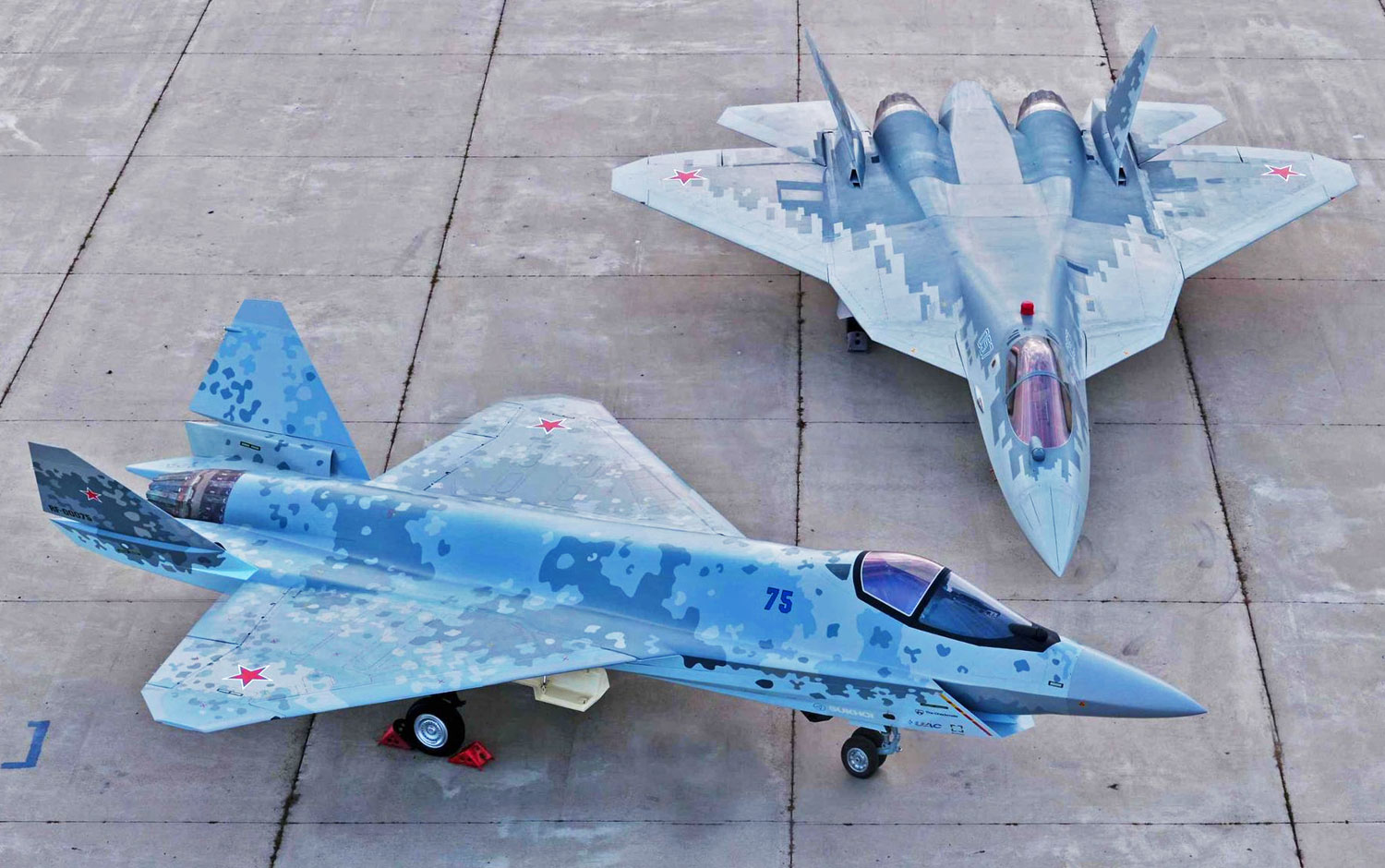The Russian Aerospace Forces (VKS RF) are set to receive an upgraded version of the Su-57 fifth-generation stealth fighter starting in 2025, according to Yuri Kondratyev, Director of the Komsomolsk-on-Amur Aircraft Production Association (KnAAPO).
In an excerpt from an interview published on a Telegram channel, Kondratyev outlined the priorities of KnAAPO, with a particular focus on the Su-57, the only fifth-generation multi-role fighter currently in Russia’s arsenal.
He confirmed that production of the Su-57 is being ramped up and indicated the aircraft’s growing importance in Russia’s military strategy.
“The Su-57 has even greater potential than the fourth generation,” Kondratyev said. “Starting in 2025, we will begin delivering a new version of the Su-57 to the Russian Aerospace Forces.”
Though he did not elaborate on specific upgrades, speculation suggests that the new iteration may feature the advanced product 30 or AL-51F1 engines, which could enhance the fighter’s performance.
The Su-57, which has been designed to compete with NATO’s fifth-generation fighters such as the US F-22 Raptor and F-35 Lightning II, boasts cutting-edge stealth technology, supermaneuverability, and advanced avionics. With these enhancements, Russia aims to compete with the West in air combat.
In the interview, Kondratyev also quoted the visionary Soviet aerospace engineer Pavel Osipovich Sukhoi, who founded the Sukhoi Design Bureau.
Sukhoi’s forward-thinking philosophy, which emphasized continual progress in aviation, was highlighted by Kondratyev: “We must not stop at what has been achieved but must relentlessly move forward because aviation designs quickly become obsolete, and what is excellent today becomes merely satisfactory tomorrow.”
Kondratyev further stressed the importance of innovation in keeping Russia’s aerospace industry competitive.
“Today, we must plan and set tasks for the future,” he remarked, acknowledging the risks of stagnation. He warned that failing to develop new product lines could lead to a loss of competitiveness, even after securing favorable contracts.
In addition to the Su-57, Russia’s Su-35S, the premier fourth-generation air superiority fighter, will also undergo upgrades starting in 2025. Although the details of these upgrades remain undisclosed, the enhancements are expected to bolster the aircraft’s combat capabilities.
“Starting in 2025, we will begin delivering the Su-35S in a new technical configuration while the aircraft already in service will be upgraded,” he said.
Russia’s Checkmate Fighter
As Russia ramps up production of its Su-57 and Su-35 fighter jets, efforts are also underway to advance the development of the T-75, commonly known as Su-75 Checkmate.
Kondratyev stressed that the Checkmate project is a key focus and represents a crucial step in the country’s aviation development strategy.
Currently, preparations for production are in full swing, with the primary objective being the construction of two prototypes—a static test model and a flight-capable version.
When asked about the possibility of setting up a separate assembly line for the Checkmate, Kondratyev clarified that while the production of the Su-35S and Su-57 would continue for many years and the scope of military aircraft repairs expands, the creation of additional facilities for mass production of the T-75 would only commence once a prototype proves viable for serial production.
This update on the Checkmate highlights Russia’s ongoing commitment to bringing the aircraft from concept to reality. Last year, officials stated that the Su-75 Checkmate was in its advanced stages of development.

The Su-75 Checkmate is a fifth-generation, light tactical, single-engine stealth aircraft designed by PJSC Sukhoi Company, part of Rostec’s United Aircraft Corporation (UAC). It was first revealed at the MAKS-2021 Air Show in Russia and made its international debut at the Dubai Airshow 2021.
Much like the Su-57, the Checkmate has encountered a range of obstacles that have hindered its progress. Although its design phase began in early 2020, the aircraft has faced multiple delays due to various challenges, including international sanctions imposed following the invasion of Ukraine, a lack of external investment, and an absence of confirmed buyers.
Additionally, the ongoing conflict has compelled Russia to redirect resources toward more immediate military needs, further slowing the development of advanced platforms like the Su-75.
Despite periodic assurances from Russian officials that the project is moving forward as planned, skepticism remains high. Many analysts question whether the country can adhere to its timeline for the first prototype’s flight.
- Contact the author at ashishmichel(at)gmail.com
- Follow EurAsian Times on Google News




